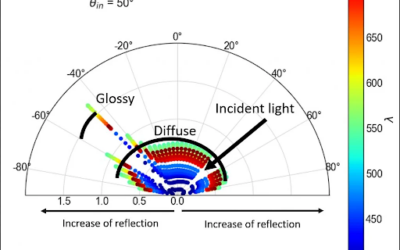Anyone who has peaked through a hotel room peephole has used a fish eye lens. Usually, the fish eye lens has a very short focal length (less than 15mm for a 35mm-size image sensor), but a large field of view (FOV). The latter can be as large as 180-degrees, giving the user a complete view of a scene. This extreme FOV produces a characteristic image with a large distortion.

Figure 1: Fisheye image with large distortion. Image from wikimedia, author: Daniel D. teoli Jr.
Aberrations and Design Considerations
Another characteristic of fisheye lenses is that the image illumination is consistent (no vignetting is present.)
One challenge of fisheye lens design is bringing all the light from these extreme angles into the sensor or viewer eye. To do this, multiple optical elements are required, usually having negative elements at the front of the lens and positive elements at its back. There is also a considerable amount of pupil aberration that needs to be corrected to reduce vignetting. Another challenge is to reduce lateral color aberration (axial color aberration is not so much of a concern due to the short focal lengths). To correct for this aberration, it is usually recommended to place a double achromatic lens behind the aperture stop.
An important aspect twhen designing fisheye lenses is the mechanical aspect of the lens. Sometimes, the ideal lens can be very thin or even overlap with other lenses due to the high negative curvature. In these cases, it is necessary to correct these dimensions to avoid needing very expensive and delicate optical elements.
Figure 2 shows the layout of a fisheye lens with some of the optical elements mentioned above.

Fiure 2. Zemax design 170 deg FOV camera lens. The effective focal length is 5.2 mm Image from Anne-Sophie Poulin-Girard, et al. Appl. Opt. 53, 2822-2827 (2014)







